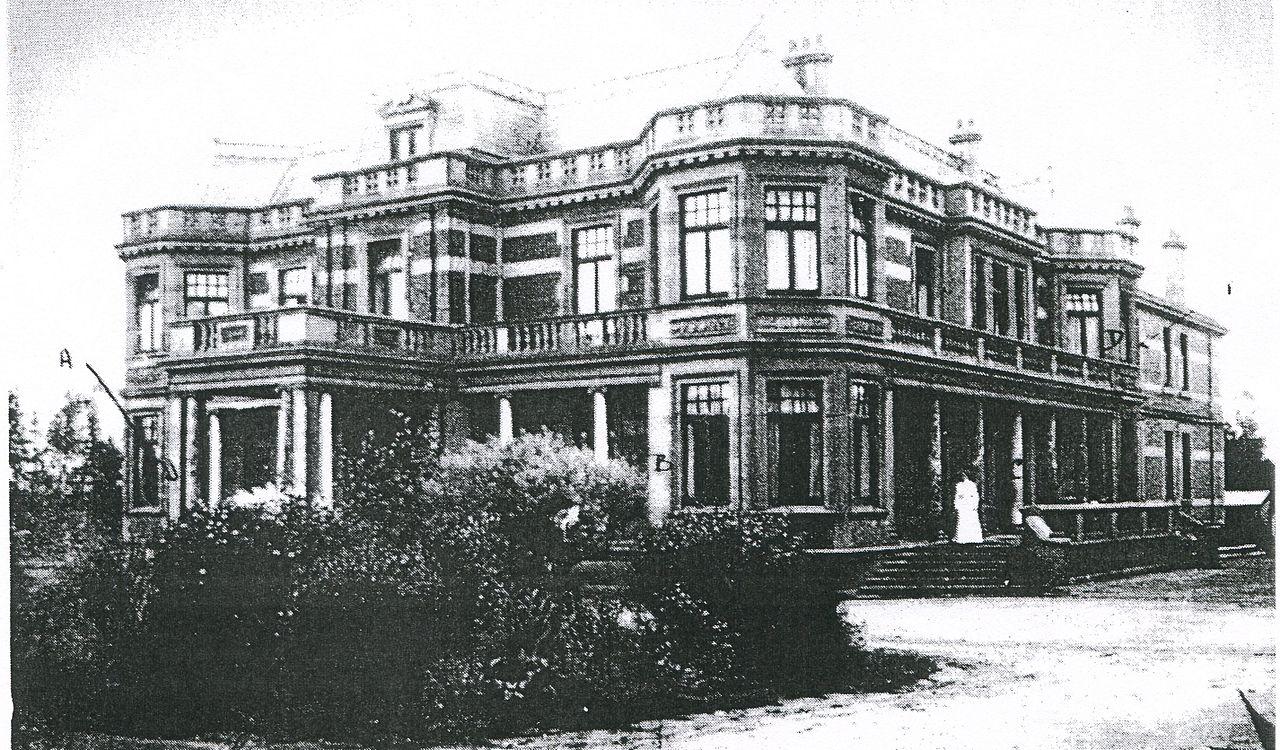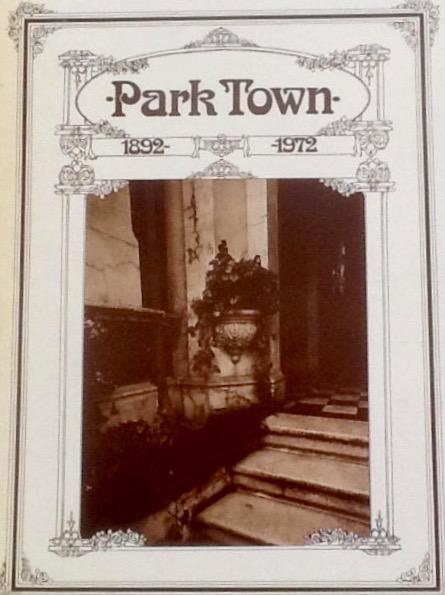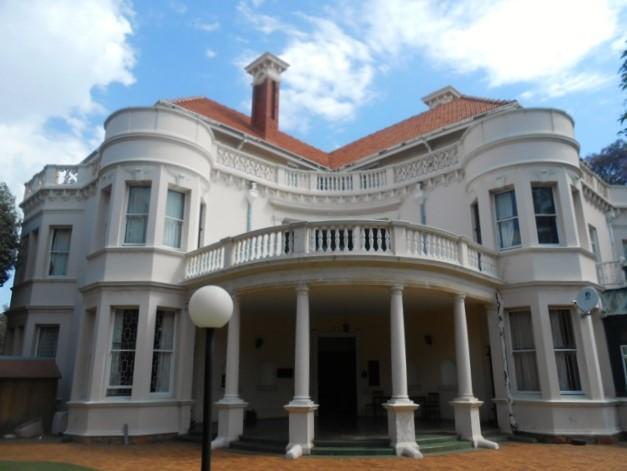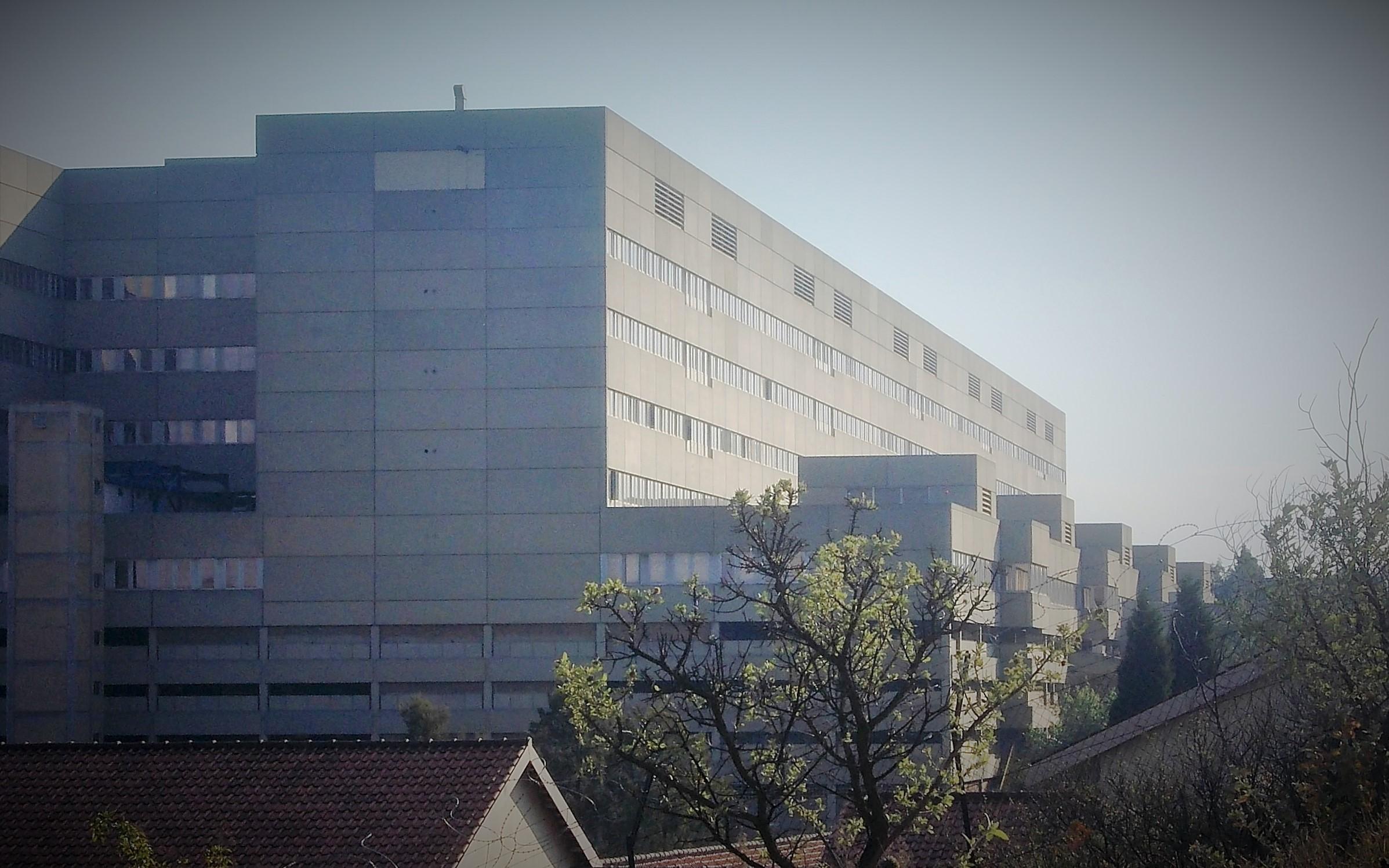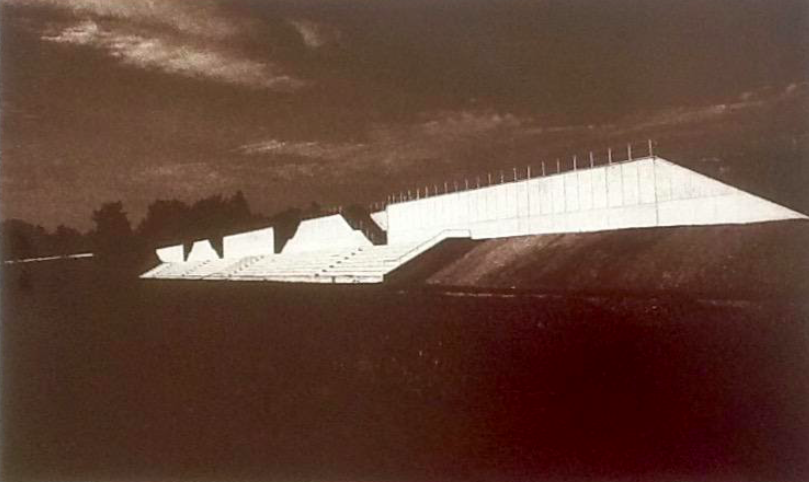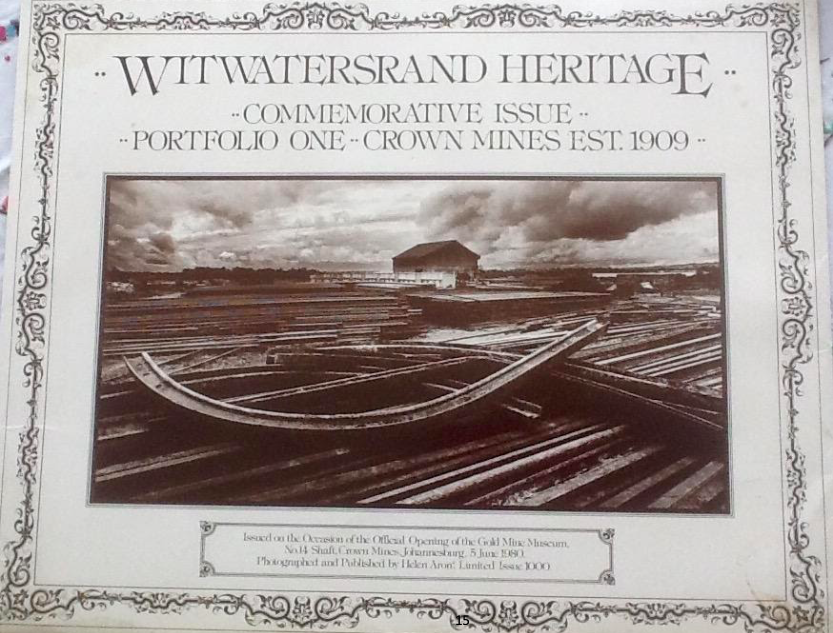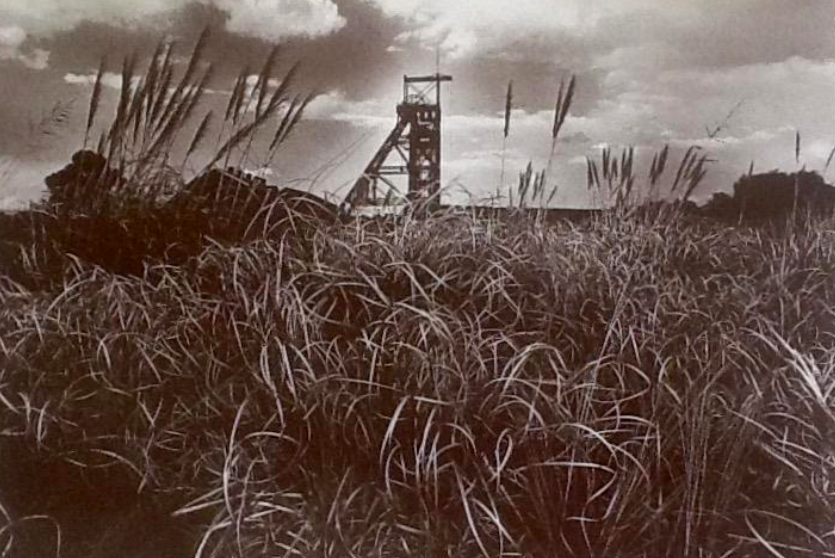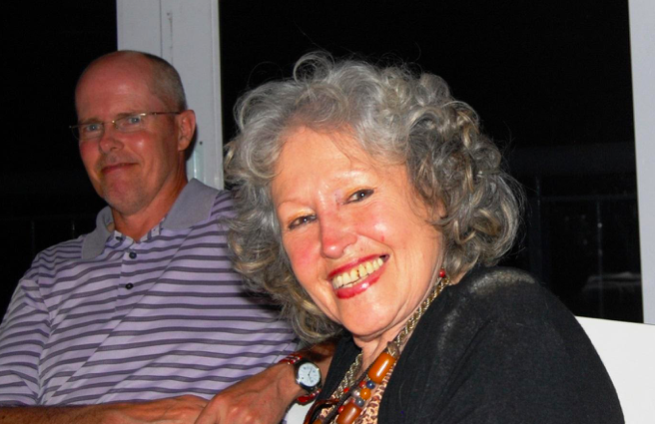
Disclaimer: Any views expressed by individuals and organisations are their own and do not in any way represent the views of The Heritage Portal. If you find any mistakes or historical inaccuracies, please contact the editor.
Helen Aron, photographer and South African art publishing impresario, passed away in Johannesburg on 11th January 2020 after a long illness. Helen was an eccentric, unique Johannesburg character- someone of passion, intelligence, flair and great courage.
Helen was born on 30th November 1939.
She will be well remembered by South Africa's Heritage community. She was a documentary and art photographer of Johannesburg’s disappearing past. We have pieced together a little about Helen’s background.
She was the daughter of immigrant German Jewish parents. Her father Arthur Aron, was born in 1904. One can assume that he sought refuge in South Africa in the 1930s. Helen’s mother was Sofie. Sofie married Arthur in Montagu in the Cape in 1938. Helen was born in 1939 and she had a sister, Lorna, who emigrated to the USA. There is an entry for Helen’s father in South African Jewry, 1965 (page 201). He is described as a “Business Proprietor” and their family address is given as Orapa Mansions, Yeo Street, Yeoville. So Helen was a daughter of Yeoville when it was very much a Jewish suburb with its synagogues and Jewish bakeries and grocery stores along Raleigh and Rockey Street. Helen was unusual in that unlike other Jewish people, she continued to live in this node of Johannesburg - Yeoville, Berea, Hillbrow and Bellevue. She matriculated in 1957 at Barnato Park or as it was more formally known, Johannesburg Girls High School, located in Berea. For a century, this was the the all girls school (of course they were only white girls) of some pre-eminence. It was a fine school, modelled on the belief that girls too should be educated in literature, languages, sciences and mathematics and also be sports women. It was a school that welcomed immigrant children and moulded them into liberal English speaking South Africans with questioning minds. There were many fine career teachers at the school.
Joel House, boarding house at Johannesburg Girls High School. It was demolished in the early 1960s.
Helen did not go onto university and always said she regretted not having a higher education. Nevertheless, she was an avid reader particularly the newspapers. Mary Boyeasse remembers that Helen had told her she worked in Public Relations at Anglo American on that remarkable in-house journal, OPTIMA. That perhaps explains Helen’s early photographic work. Marian Laserson related that one of Helen’s early jobs was photographing the horse race finishes (those photo finish shots) - requiring lightning reflexes and rushing to her studio to develop and print if there was a dispute as to who won. Marian adds, Helen never learned to use a digital camera, she believed in an older technology, when photography really did require an artistic eye and careful attention to shutter speeds and light.
Helen was also an active and keen member of the Institute of Innovators and Inventors. Marian shares that Helen invented a complicated storage system of boxes about the size of large shoe boxes which could clip together and would be strong enough to form a partition in a room. She was trying to get it patented. She also invented something to do with a mascara dispenser with different colours – or something like that.
She was a Johannesburg person through and through and enjoyed living in “old” Johannesburg - she stayed put when others migrated or emigrated in the face of a demographic and political revolution. At the time of her passing Helen lived in Sharp Street Bellevue in a lovely small apartment block, called Panoramic View. It was a block that was probably erected in the fifties or sixties, when Bellevue was a popular and pleasant place to live and be a city girl. Her father was a property owner and she inherited a couple of buildings from him and there was that side of Helen that practically applied herself to repairs, renewals, tenant problems and partnership with “bakkie builders”. Helen always cared about people and had no side or snobbishness.
At the peak of her career she was a champion of Parktown, or as she called the suburb Park Town. She undertook the massive project of the special commemorative boxed portfolio Park Town 1892-1972 with 51 of her photographic images of disappearing Parktown together with commissioning the significant book on Parktown with the essays by Clive Chipkin, Arnold Benjamin and Shirley Zar.
Portfolio Cover
Arnold Benjamin wrote on the social history of Parktown. Clive Chipkin's contributions were about the baronial architecture of the suburb and the use of prefabricated iron. Shirley Zar wrote about Parktown as the garden suburb and its town planning. The campaign to save Parktown was solidly underpinned by these important research studies. Helen was the one who coordinated this major publication, she is acknowledged for her conception and realization. The Portfolio was beautifully printed in limited edition in Switzerland on thick cream card/paper. The project absorbed Helen’s time, energy and investment for many months. She personally went to Switzerland to oversee the production of the portfolio.
As Parktown began to change and disappear so this portfolio raised the flag and woke the city fathers and citizens to the history of Johannesburg and the importance of conserving what remained in Parktown. After all, in 1972 Johannesburg was 86 years old - a young city with no respect for its important buildings. Joburg’s habit was to invest, speculate, build, use, demolish and rebuild new and bigger buildings. Helen was one of the small group of people from the Parktown and Westcliff Heritage Trust who fought the loss of Parktown, as office blocks appeared and developers offered home owners tantalizing prices.
The expansion into Parktown of higher educational institutions, such as Wits, was both a negative and a positive. The coherent pattern of residential clusters gave way to large scale campus development and residences though some prime heritage houses such as Outeniqua and North Lodge were saved. The old Transvaal Provincial Administration was the biggest destroyer of all with their triumphal positioning of the then new all white Johannesburg Hospital (now the Charlotte Maxeke Johannesburg Academic Hospital) and the Wits Medical school on the Parktown Ridge. By the time the Parktown portfolio had appeared, the M1 motorway had sliced through estates, houses and gardens pulverising the Witwatersrand Parktown ridge. It was all "progress" and all but obliterated the old expansive, grand Parktown. Parktown's history dated back to the 1890s. The Aron portfolio served as a record of its social history and was an epitaph of note. It was also an expression of Helen’s defiant activism in the face of the bulldozers and the insensitive new town planners.
North Lodge (The Heritage Portal)
Charlotte Maxeke Johannesburg Academic Hospital (The Heritage Portal)
Helen’s photo of the new College of Education Campus on the Parktown site. Old Parktown was demolished to make way for a sports stadium and new brutalist architecture of the academic buildings.
Clive Chipkin remembers Helen: “Anyone who knew Helen Aron encountered a formidable, talented, eccentric engaging personality. We met in 1970 when she came charging into the Parktown office where I was working and said without introduction: “I’ve found you – we have got to work together on Parktown before its gone”. This was the beginning of that marvellous Parktown book, Parktown 1892-1972 with their evocative sepia photographs. It was the beginning too of a six month period of chaotic interruptions with her maniac drive to get the book done against the odds. Those atmospheric sepia photos, which she took, caught the neurotic quality in late Victorian era continuing into the early years of the 20th century. Helen found enchantment there and in the end her book (after all it was her book) responds to that elusive quality.”
Shirley Zar in a phone call to Clive from her home in Cape Town, remembers Helen as a talented, perceptive photographer. “Helen broke new ground before everyone else talked heritage and conservation. She recognized why Parktown‘s disappearance should be recorded. Helen made a masterpiece of her production of the Parktown portfolio. She wanted an artefact - a work of art.” Shirley too recalled that Helen had gone to Switzerland as she thought that nothing local was good enough at that time! Shirley comments: "It was pretty unusual to record something in this way because what Helen wanted was a book “in the grand manner” that matched Parktown. She gave Johannesburg a work of art.“
Flo Bird writes: “Helen served on the board of the Parktown and Westcliff Heritage Trust for many years. Her enthusiasm stemmed from the work she had done photographing the houses which were mostly demolished for the development of the Johannesburg College of Education. But she also protested vehemently against noise and graffiti. Helen became a keen environmentalist as well as a heritage conservationist. She was a fine photographer, but I only know of her work in Parktown 1892-1972 with Clive Chipkin and Shirley Zar. And her late work on Crown Mines.“
Flo purchased the Parktown portfolio book soon after publication. She recalls: “It was the most expensive book I had ever bought! But it was worth every penny to me in the years that followed”. Flo chuckles: “Helen was always in such a hurry... I wonder when she slowed down”. Flo remembers: “She was really a friend who cared. She would phone me after my husband’s death to chat and keep my spirits up. Sadly she didn’t use a computer so was not on e-mail and we lost touch in recent years. We have lost a colourful heritage conservationist.
Flo adds: “Helen Aron knew Joburg well and continued living in Hillbrow despite the obvious problems. Helen always had our respect and thanks for her anger at the total destruction wreaked by the National Party Government to give way to the Johannesburg College of Education and the new Hospital.“
Alkis Doucakis remembers Helen: “One just cannot forget Helen Aron! We met only a few times - the first was in the late 1990s, the last about five years ago yet it was she who always saw me first and, with a loud, "Hello Alkis", and a big smile would rush to give me a big, sincere warm hug. She would then start chatting, also in a rush, before proceeding with her work or to greet someone else. Helen was a most sincere person.”
Franco Frescura has also paid tribute to Helen Aron in a full warm and wonderful tribute that captures their collaboration, friendship and the experience of learning from one another. This is published as a separate piece (click here to view).
Marion Laserson remembers her friend Helen Aron: “I knew Helen well. She was often at my house; at least once a month and sometimes even three of four times a week. Sometimes she was in a rush to go somewhere else and sometimes she needed my knowledge of computers. In the early 1990s she took it upon herself to promote the Johannesburg Historical Foundation. Helen got the idea that this amazing thing called a facsimile machine would be the way to go. So she would come to my house with a list of all the local publications and a handwritten notice for the event. I would then produce the notice for her on my computer - always several times while she supervised every underline, colon, spacing etc. - and she would sit at my fax machine sending out these notices to about 20 different publications. It took half a day. She also promoted the Shakespeare Society in a similar way.
I could write a book on our friendship and association. Helen took a polite interest in my “activism” regarding land use and building and environmental concerns with particular reference to urban wetland, ground water, rivers, etc. She attended a few of my talks and I attended some of the talks she gave on her portfolio and book. Helen idolised Ebenezer Howard and his promotion of Garden Cities.
At her funeral the rabbi spoke about her accomplishments with respect to heritage and photography and he also mentioned Helen’s generosity. I discovered her generosity when in the last few months of her life I ferried her around to do her shopping. As we arrived at a shopping centre – in the car park – a parking attendant would come up to her and greet her with such warmth. One of them told me that she gave him R300 a month towards the education of his daughter. She also gave food and money to a physically disadvantaged parking attendant at another shopping centre. These are only two that I know of.
Illness barely slowed Helen down. One always felt that there had been a cyclone around when Helen left. But I tolerated her eccentricity because I looked behind the over-dressed, over made up mask to a really remarkable woman.”
The portfolio of her photographs and the Parktown book rapidly became collectable. What was unusual was that Helen financed the publication herself, through her photographic company, Studio 35 publications and was much admired for both the photographs and for her energetic entrepreneurial enterprise. She was doing self-publishing well before the internet age made it all so much easier. Many people framed her photos for their offices and homes. Of course, this then makes a complete portfolio even harder to come by in recent years.
I am still of the opinion that the series of essays commissioned by Helen hold their own and remain pioneering benchmarks. The portfolio was a work of art.
In 1980 Helen published a limited edition portfolio titled Witwatersrand Heritage Commemorative Issue… Portfolio One... Crown Mines Est. 1909; this comprised four sepia toned photographs by Helen taken in 1972 of the Crown Mines site plus a folio page about the establishment of Crown Mines Ltd and its later history and a final reproduction of the share certificates.
Cover of the limited edition portfolio
Franco Frescura designed and handled the lay out of the historical information sheet. It was a limited edition of 1000 (and I see my copy is stamped 781). The somewhat nostalgic look was achieved with the decorative, overly elaborate scroll borders, giving the set the appearance of a modern day adaptation of an illuminated manuscript. But the photographs convey a severe and sombre mood. My favourite of this selection is the image of No 15 Shaft headgear at Crown Mines, with wild Highveld African grass in the foreground. The light and shade is the grass giving that look of abandonment of an old mine property. Crown Mines became the site of Gold Reef City and that faux heritage re-creation of Johannesburg circa 1890. That was heritage as funfair and entertainment! Helen did not approve.
My favourite photo of Crown Mines – with the Highveld grass in the foreground and the steel of the headgear’s etching triangles and squares against the skyline.
In the 1990s Helen was an active member of the Johannesburg Historical Foundation with Alan Bamford. She was in charge of publicity and marketing the lectures and talks and reaching the newspapers. Helen’s name appears in the annual reports and the journals of those years.
Helen was fiercely protective of her photographic copyright and hated it when later internet users in turn photographed her photographs, sometimes not even knowing they were hers. She never took it as a compliment. To her it was copyright theft. She did not embrace the internet age. The revolution in communication technology was something that Helen did not take to, though I recall a long telephone conversation about which smartphone she should purchase. I was the wrong adviser on that subject. But even the new phone was seldom used and Helen was difficult to reach. I knew Helen would phone me when she had a question about heritage or the JHF programme. When she phoned there was a sense of urgency and importance to the phone call but then time did not matter as we chatted and thought through implications.
The Johannesburg Heritage Foundation was very grateful to Helen for her recent donation of a brand new copy of the Parktown Portfolio which we sold at the fundraising auction in December.
Helen Aron at the Holocaust Museum, Johannesburg in 2019 (Gail Wilson)
I think this photo captures Helen’s mood and sadness in response to the visit to the Museum. Lewis Levin was the architect. And here the exterior façade is clad with “railway lines” and stones embedded in the concrete. Railway lines, transportation to death camps and cattle trucks represented the journeys of so many holocaust victims. The railway line images are not straight but are intended to show confusion of genocide. Helen’s parents escaped from Germany in the 1930s and fled to South Africa to give birth to the next generation.
Rest in Peace Helen, your passion for your city will be remembered. We have lost a pioneer in heritage and conservation.
Main image: Helen Aron and Noel Hutton (town planner). Photo by Marion Laserson
Kathy Munro is an Honorary Associate Professor in the School of Architecture and Planning at the University of the Witwatersrand and chair of the Johannesburg Heritage Foundation. She enjoyed a long career as an academic and in management at Wits University. She trained as an economic historian. She is an enthusiastic book person and has built her own somewhat eclectic book collection over 40 years. Her interests cover Africana, Johannesburg history, history, art history, travel, business and banking histories. She researches and writes on historical architecture and heritage matters. She is a member of the Board of the Johannesburg Heritage Foundation and is a docent at the Wits Arts Museum. She is currently working on a couple of projects on Johannesburg architects and is researching South African architects, war cemeteries and memorials. Kathy is a member of the online book community the Library thing and recommends this cataloging website and worldwide network as a book lover's haven.
Comments will load below. If for any reason none appear click here for some troubleshooting tips. If you would like to post a comment and need instructions click here.

